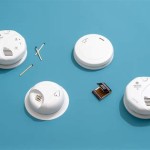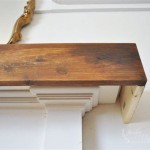The article should be original and unique.
False Beams for Fireplaces: Aesthetics, Functionality, and Installation
Fireplaces are frequently considered focal points in residential and commercial spaces, conveying warmth, comfort, and a sense of established character. While functional fireplaces remain desirable, increasingly, aesthetic considerations are taking precedence. Consequently, false beams for fireplaces have emerged as a popular design element, offering the visual appeal of traditional timber beams without the weight, cost, or structural requirements associated with solid wood.
False beams, also known as faux beams or decorative beams, are lightweight structures crafted from various materials to mimic the appearance of authentic wooden beams. They are typically hollow, allowing for ease of installation and concealing wiring or other utilities. The versatility of false beams extends beyond mere aesthetics; they contribute to the overall ambience of a space, enabling designers and homeowners to achieve desired architectural styles, from rustic farmhouse to contemporary chic.
The appeal of false beams lies in their ability to replicate the textures, colors, and imperfections of natural wood. Manufacturers employ advanced techniques, such as molding and staining, to achieve realistic wood grain patterns, knots, and other distinguishing features. The resulting beams, while synthetic, convincingly emulate the look and feel of aged timber, enhancing the visual interest and perceived value of a fireplace surround.
Materials Used in the Construction of False Beams
The selection of materials for false beams significantly influences their appearance, weight, durability, and cost. Several options are commonly utilized, each with its own advantages and disadvantages. Understanding the characteristics of these materials is crucial for making informed decisions about which type of false beam best suits a particular application.
Polyurethane is a widely used material in the production of false beams. It is a lightweight, closed-cell foam that can be molded into intricate shapes and textures. Polyurethane beams are resistant to moisture, insects, and rot, making them suitable for both indoor and outdoor applications. They are also relatively easy to install and require minimal maintenance. However, polyurethane beams may lack the same level of authenticity as beams made from other materials, and their appearance can sometimes be perceived as artificial, particularly if not carefully finished.
High-density polyethylene (HDPE) is another plastic-based material often used for false beams. Similar to polyurethane, HDPE is lightweight, durable, and resistant to moisture and insects. HDPE beams are generally more rigid than polyurethane beams, providing greater structural stability. They can be manufactured with realistic wood grain patterns and are available in a range of colors and finishes. HDPE is also a recyclable material, making it a more environmentally friendly option compared to some other synthetic materials.
Wood composites, such as medium-density fiberboard (MDF) and plywood, are sometimes used as core materials for false beams. These materials offer a balance of affordability and workability. MDF and plywood can be easily cut, shaped, and finished to resemble natural wood. However, they are susceptible to moisture damage and may require sealing or painting to protect them from the elements. Wood composite beams are typically heavier than polyurethane or HDPE beams and may require stronger support structures.
Real wood veneers can be applied to any of the aforementioned core materials to enhance the authenticity of false beams. Wood veneers are thin slices of natural wood glued to the surface of the beam, providing the look and feel of solid wood. Veneered beams are generally more expensive than beams made entirely from synthetic materials, but they offer a superior level of realism. The choice of wood species for the veneer can significantly impact the overall appearance and cost of the beam.
In certain applications, metal framing is incorporated into the construction of false beams to provide additional structural support. Metal frames are typically made from steel or aluminum and are concealed within the hollow core of the beam. Metal framing is particularly useful for large or complex beam designs that require greater load-bearing capacity. It also allows for the integration of lighting or other electrical fixtures within the beam.
Advantages of Using False Beams in Fireplace Design
The popularity of false beams stems from the numerous advantages they offer over traditional solid wood beams. These benefits encompass cost-effectiveness, ease of installation, design flexibility, and reduced maintenance requirements.
One of the primary advantages of false beams is their lower cost compared to solid wood beams. The price of lumber has fluctuated considerably in recent years, making solid wood beams a significant investment. False beams, particularly those made from synthetic materials, are often significantly less expensive than their solid wood counterparts. This cost difference can be substantial, especially for large projects that require multiple beams.
The lightweight nature of false beams simplifies the installation process. Solid wood beams can be extremely heavy and require specialized equipment and skilled labor to install safely. False beams, on the other hand, can typically be installed by a single person using basic tools. Their hollow construction allows for easy attachment to existing structures using screws, nails, or adhesive. This ease of installation translates into lower labor costs and faster project completion times.
False beams offer greater design flexibility than solid wood beams. They can be manufactured in a wide range of sizes, shapes, and finishes, allowing for customization to suit specific design requirements. Unlike solid wood beams, which are limited by the availability and dimensions of natural trees, false beams can be created in virtually any size or shape. This flexibility enables designers to achieve unique and creative architectural details that would be difficult or impossible to replicate with solid wood.
The hollow core of false beams provides a convenient space for concealing wiring, plumbing, or other utilities. This feature is particularly useful in fireplace surrounds, where wiring for lighting or electronic devices may need to be hidden. By running wires through the hollow core of the beam, designers can maintain a clean and uncluttered appearance without compromising functionality. This integration of utilities enhances the overall aesthetic appeal of the fireplace and simplifies the installation process.
False beams require minimal maintenance compared to solid wood beams. Solid wood beams are susceptible to moisture damage, insect infestation, and rot. They may require periodic sealing, staining, or painting to protect them from the elements and maintain their appearance. False beams, particularly those made from synthetic materials, are resistant to these problems and require little or no maintenance. This reduces the long-term cost of ownership and ensures that the beams retain their beauty for years to come.
Installation Techniques for False Beams Around Fireplaces
Proper installation is crucial for ensuring the safety, stability, and aesthetic appeal of false beams. The specific installation techniques will vary depending on the type of beam, the material used, and the construction of the fireplace surround. However, some general principles apply to all false beam installations.
Before beginning the installation, it is essential to carefully measure the area where the beams will be placed and plan the layout accordingly. Accurate measurements will ensure that the beams fit properly and are evenly spaced. It is also important to consider the overall proportions of the fireplace and the surrounding room when determining the size and placement of the beams. A well-planned layout will result in a visually balanced and harmonious design.
Support structures are often necessary to provide adequate support for false beams, especially for larger or heavier beams. These structures can be made from wood, metal, or other suitable materials. The support structures should be securely attached to the existing wall or ceiling framing using screws, nails, or other appropriate fasteners. The spacing and size of the support structures will depend on the weight and dimensions of the beams.
Adhesive is commonly used to attach false beams to the support structures or directly to the wall or ceiling. Construction adhesive is a strong and reliable adhesive that is specifically designed for bonding building materials. The adhesive should be applied evenly to the back of the beam and to the surface where it will be attached. It is important to follow the manufacturer's instructions for application and curing time. Clamps or temporary supports may be needed to hold the beam in place while the adhesive cures.
Screws or nails can be used in conjunction with adhesive to provide additional holding power. Screws should be countersunk to avoid protruding from the surface of the beam. Nails should be hammered in flush with the surface. The spacing and size of the screws or nails will depend on the weight and dimensions of the beams. If the beams are made from a soft material, such as polyurethane, it may be necessary to pre-drill pilot holes to prevent splitting.
Once the beams have been installed, it is important to conceal the fasteners and seams for a clean and professional finish. Screw holes can be filled with wood filler or putty that matches the color of the beam. Seams between beams can be caulked with a paintable caulk. After the filler or caulk has dried, it can be sanded smooth and painted or stained to match the surrounding area. This will create a seamless and visually appealing appearance.
Lighting can be integrated into false beams to enhance their aesthetic appeal and functionality. Recessed lighting fixtures can be installed within the hollow core of the beam to provide ambient or task lighting. The wiring for the lighting fixtures should be concealed within the beam and connected to a power source. It is important to consult with a qualified electrician to ensure that the lighting installation is safe and complies with local electrical codes.

Faux Fireplace Beam Simply Fires

Dartmoor Timber Effect Fireplace Beam Bonfire Berkshire

Hollow Deep Oak Fireplace Beam Bonfire Berkshire

Non Combustible Beams And Fake Timber Effect Cast Mantels

Oak Effect Fire Resistant Mantel And Beams For Your Fireplace

Honey Oak Vintage Non Combustible Timber Effect Fireplace Beam Bonfire Berkshire

Oak Effect Fire Resistant Mantel And Beams For Your Fireplace

York Non Combustible Timber Effect Fireplace Mantel Beam Bonfire Berkshire

Oak Fireplace Beams Highest Quality Best Value Mantels

Burnt Oak Vintage Non Combustible Timber Effect Fireplace Beam Bonfire Berkshire








